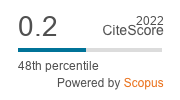Tacky “Shakespeares” in Japan
DOI:
https://doi.org/10.2478/mstap-2013-0007Keywords:
pop culture, Japan, consumerism, commodification, mass mediaAbstract
There is no doubt that Shakespeare is “the flagship commodity” in the globalized cultural market. The fact that his works are being studied, performed, and admired, or, adapted and parodied almost all over the world, would surely testify that his works are great sources to be capitalized on (both culturally and materially) in the consumerist society in which we live. However, it could be also argued that the brand logo, “Shakespeare,” no longer holds such a privileged status, that it is merely one of numerous cultural artifacts that can be used and recycled, and that one of the few convenient things about “Shakespeare” is that it can be reproduced, copied, and parodied without the need for any royalty payments being made? Some popular, global, tacky “shakespeares” seek to destabilize the presupposed notion that “Shakespeare” is the dominant, central, hegemonic icon by juxtaposing “Shakespeare” with other artifacts, which are presumed to be of minimal capitalist and cultural value. This article attempts to illustrate how (in)significant or (un)influential Shakespeare, as a residual socio-cultural icon, can be. Tackyfying “Shakespeares” can, however, also be a means to proliferate the Bard. Japanese pop “Shakespeares,” proudly and assertively tacky, offer tributes to the great Bard.
Downloads
References
Aihara, Koji and Kentaro Takekuma. Even a Monkey Can Draw Manga. VIZ Media, 2002.
Google Scholar
Anderson, Joseph L. Enter a Samurai: Kawakami Otojiro and Japanese Theatre in the West. Vol. 1. Tuscon: Wheatmark, 2011.
Google Scholar
Anime News Network. “Romeo X Juliet” (TV). Web. 11 April 2012. http://www.animenewsnetwork.com/encyclopedia/anime.php?id=7087
Google Scholar
Aoike, Yasuko. Sons of Eve (Ibu no musuko tachi). Vol.1. Hakusen-sha, 1995.
Google Scholar
Boose, Lynda E. and Richard Burt, eds. Shakespeare, the Movie: Popularizing the Plays on Film, TV, and Video. London: Routledge, 1997.
Google Scholar
Burt, Richard. Unspeakable ShXXXpeares, Revised Edition. London: Palgrave MacMillan, 1999.
Google Scholar
Brandon, James R. “Shakespeare in Kabuki.” Performing Shakespeare in Japan. Eds. Minami Ryuta, Ian Carruthers, and John Gillies. Cambridge: Cambridge University Press, 2001. 33–53.
Google Scholar
Cavallo, Dani. Anime and the Art of Adaptation. Jefferson, North Carolina and London: McFarland & Company, Inc., 2010.
Google Scholar
Cartelli, Thomas and Katherine Rowe. New Wave Shakespeare on Screen. London: Polity Press. 2007.
Google Scholar
Dickson, Andrew. “World Shakespeare Festival: Around the Globe in 37 Plays.” The Guardian. Friday 20 April 2012. Web. 23 April 2012. http://www.guardian.co.uk/stage/2012/apr/20/world-shakespeare-festival-globe-theatre-rsc
Google Scholar
Dromgoole , Dominic and Gary Taylor. “Welcome to Bardworld.” Guardian 13 July 2005. Web. 31 July 2012. http://www.guardian.co.uk/stage/2005/jul/13/rsc.theatre
Google Scholar
Gillies, John, Ryuta Minami, Ruru Li and Poonam Trivedi. “Shakespeare on the stages of Asia”. The Cambridge Companion to Shakespeare on Stage. Eds. Stanley Wells and Sarah Stanton. Cambridge University Press, 2002. Available at DOI:10.1017/CCOL0521792959.014.
Google Scholar
Gonzo. “Romeo X Juliet”. Web. 31 July 2012. http://anime.goo.ne.jp/special/gonzo/romejuli/
Google Scholar
Kaneo, Tanejiro. Otojiro and Sadayakko’s World Tour (Otojiro Sadayakko Manyu-ki). Kaneo Bunei-do. 1901.
Google Scholar
Katayama, Kyoichi. Socrates in Love. VIZ Media, 2005.
Google Scholar
Kotani, Mari. “Metamorphosis of the Japanese Girl: The Girl, the Hyper-Girl, and the Battling Beauty.” Mechademia. Ed. Frenchy Lunning. Vol. 1. 2006. University of Minnesota. 162–169.
Google Scholar
Kurashina, Ryo (story) and Noriyoshi Inoue (illustration). The King of the Nights (Yaoh). vol. 1. Shueisha, 2003.
Google Scholar
Lanier, Douglas. Shakespeare and Modern Popular Culture. Oxford: Oxford University Press, 2002.
Google Scholar
Masuda, Taro Kaja. New Othello (Shin Osero). Saiun-kaku, 1906. Digital Library from Meiji Era. National Diet Library. Web. 11 April 2012. http://kindai.ndl.go.jp/BIBibDetail.php
Google Scholar
Minami, Ryuta. “‘What, has thing appea’d again tonight?’: Re-playing Shakespeares on the Japanese Stage.” Re-playing Shakespeare in Asia. Eds. Poonam Trivedi and Minami Ryuta. New York and London: Routledge, 2010. 76–94.
Google Scholar
Nagasumi. Romeo and Juliet in Rhyme. 11 January, 2009, Museum of Contemporary Art Tokyo. Live Performance.
Google Scholar
“Osero” Mirai Seiki Shakespeare. Writ. Ohara Shinji. Dir. Ken Nikai. Kansai TV, 2009. on DVD.
Google Scholar
Press Conference Review. “Romeo X Juliet”. 25 March 2007. Web. 30 July 2012. http://www.famitsu.com/anime/news/2007/03/23/681,1174647699,68933,0,0.html
Google Scholar
Revolutionary Girl Utena. Dir. Ikuhara Kunihiko. Original Manga Saito Chiho. 1999– 2003. New York: Central Park Media. DVDs.
Google Scholar
Romeo X Juliet. Dir. Oizaki Fumitoshi. GONZO K.K. 2007. DVD.
Google Scholar
Tezuka, Osamu. “Robio and Robietto.” Complete Works of Tezuka Osamu. Vol. 234. Kodansha, 1981.
Google Scholar
Toyomaru Industry. CR Romeo X Juliet. Web. 31 July 2012. http://www.toyomaru.jp/main/macine/romeo/juliet/index.html
Google Scholar
Yoshihara Yukari. “Is This Shakespeare? Inoue Hidenori’s Adaptations of Shakespeare.” Re-Playing Shakespeare in Asia. Eds. Poonam Trivedi and Minami Ryuta. New York and London: Routledge, 2010. 141–156.
Google Scholar
Yoshihara Yukari. “The First Japanese Adaptation of Othello (1903) and Japanese Colonialism.” Shakespeare in Culture. Eds. Bi-Qi Beatrice Lei and Ching-His Perng. Taipei: National Taiwan University Press, 2012. 231–250.
Google Scholar
Downloads
Published
How to Cite
Issue
Section
License

This work is licensed under a Creative Commons Attribution-NonCommercial-NoDerivatives 4.0 International License.











